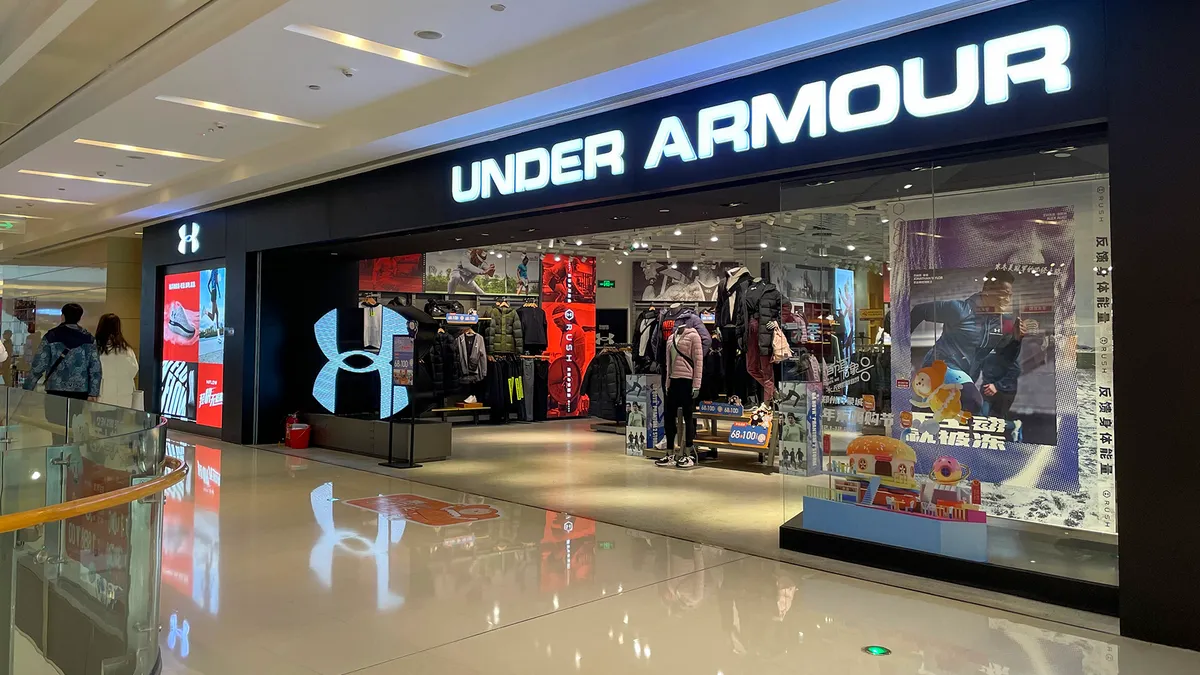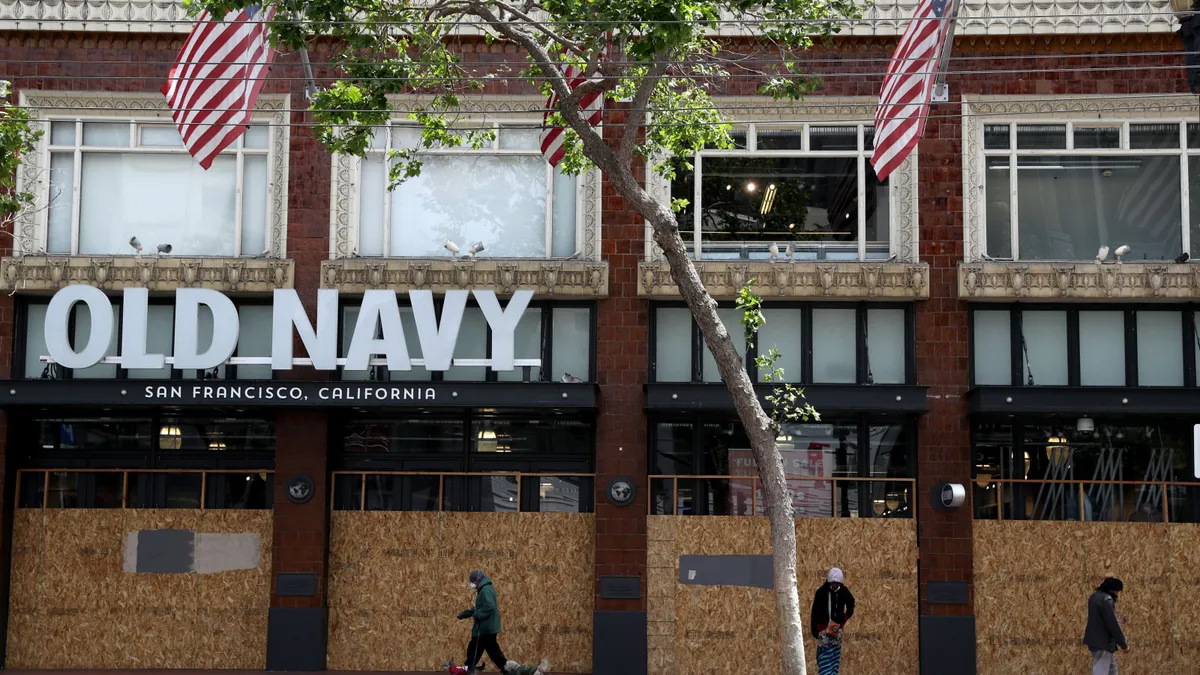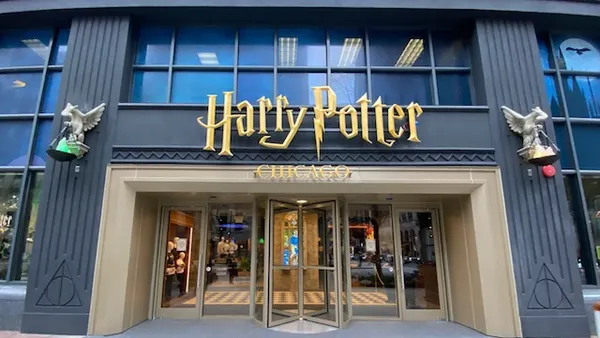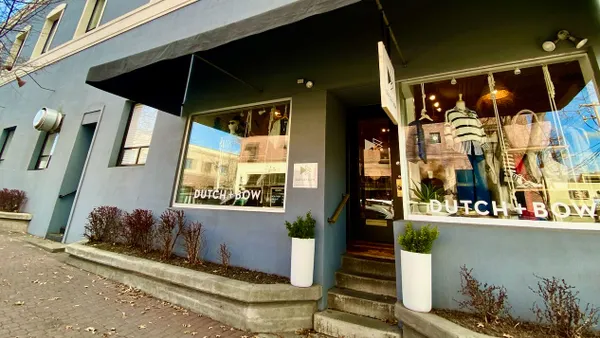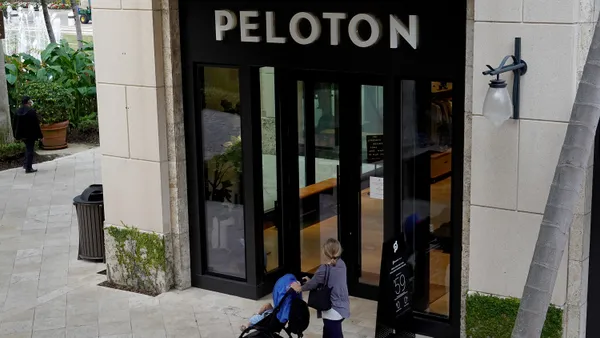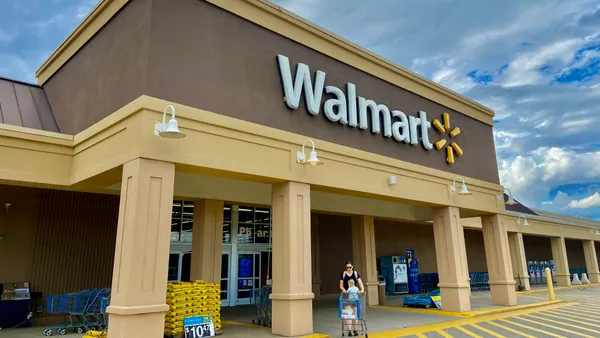Dive Brief:
- Almost a year into founder Kevin Plank’s return as CEO, Under Armour sales are still struggling, with net revenue down 5.7% in Q3, according to a Thursday press release. Overall revenue reached $1.4 billion in the quarter and revenue in North America, its largest region, declined 7.8% to $844 million.
- DTC revenue at the activewear brand was down 9%, due mostly to a 20% e-commerce decline as Under Armour pulls back on promotions. Wholesale, on the other hand, fell just 1% to $705 million.
- Plank said on a call with analysts Thursday that the brand plans to open more wholesale accounts in 2025, but noted they would mostly be with boutique retailers. Under Armour has been on a journey to regain shelf space and rebuild its brand equity.
Dive Insight:
While still present, Under Armour’s revenue declines in Q3 beat expectations. The brand raised its full-year guidance slightly, but still expects a 10% revenue decline. Plank on a call said he was “optimistic” about the brand’s progress on its turnaround. Since Plank’s return to the top spot, Under Armour has undergone layoffs and a 25% SKU reduction, as well as the planned shuttering of a California distribution center.
“There are two ways to look at Under Armour’s negative sales numbers. The first is that they are a function of the deliberate reengineering the company is undertaking to strengthen its brand. The second is that they result from a brand that has become out of tune with consumers and is not punching through in a competitive market,” GlobalData Managing Director Neil Saunders said in emailed comments. “In our view, the truth lies somewhere between these two positions.”
For his part, Plank said the brand’s approach to developing more high-end product is working, which has been bolstered through a series of recent hires, including a new chief product officer, brand strategy head and regional leaders, on top of John Varvatos’ arrival as chief design officer in 2023. The product lead time, though, means the results of Under Armour’s work last year won’t show until later this year or early next.
“I just wish everything could go faster. It’s the hardest thing about this industry is that 18 months to build products or make a shoe or a shirt — and it should just happen faster,” Plank said.
As the brand improves product, it is also increasing wholesale distribution. Chief Financial Officer Dave Bergman said Under Armour continues to work with Kohl’s, which is particularly good for exposure to female shoppers, and noted that none of its accounts make up even close to 10% of the brand’s sales. Plank added that the brand isn’t looking to decrease its current distribution, but rather layer on “better” and “best” distribution partners for its more premium product.
Heavy marketing investments are also underway, including in its loyalty program, which now has 17 million members. Plank said the retailer is focused on making the loyalty program less about getting discounts and more about community building.
One win for Under Armour is that tariffs — at least so far — aren’t expected to strongly impact the brand. Under Armour sources less than 3% of its product from China and an even smaller amount from Mexico, with none from Canada.



